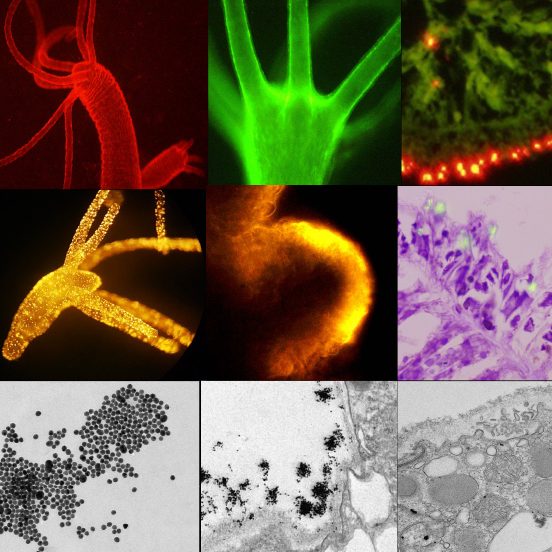Description of the activity
Animal models play critical roles in fundamental discovery, feasibility and bioactivity testing. Invertebrates address also the 3Rs principle reducing vertebrate experimentation and avoiding ethical issues. We use the freshwater polyp Hydra vulgaris and the sea anemone Nematostella vectensis as in vivo biosystems to test advanced drug delivery tools and monitor their biocompatibility. We tested bioactivity of a variety of inorganic and organic platforms, i.e. multifunctional gold nanoparticles for delivery of siRNA and gene downregulation or for detection of mRNA in situ, inorganic quantum dots to elicit neuronal activity, imaging cell membrane receptors, up to polymeric light responsive microcapsules to control intracellular pathways by light. Recently, we purified and characterized nanovesicles from Hydra and cultured cells, proposing novel natural and safe tools to vehicle chemical messages for therapeutic purposes.
The high sensitivity to heavy metals and organic compounds allowed to use our model species not only to test toxicity of drug delivery platforms but to monitor environmental pollution. We have developed an integrated multilevel analysis profiling the biosafety and toxicity of diverse toxicants in freshwater and estuarine environments, focusing on metal based nanoparticles, unintentionally released from antropogenic sources through powder/water waste-stream. The toxicity endpoints of many different nanoparticles were determined, i.e. Cd-based QDs, carbon nanooni

Involved personnel
C. Tortiglione | A. Tino | G. Tommasini | I. Rea
National and International Collaborations
University of Napoli Federico II (Dept of Pharmacy),
University of Salerno (Department of Pharmacy, Biomedical division)
Instituto de Nanociencia y Materiales de Aragón (INMA), Zaragoza, Spain
Laboratoire de Chimie et Biologie des Métaux, CEA-Grenoble, France
Instrumentation/facilities
Advanced laboratory for molecular biology: equipment for DNA, RNA and Protein analysis; Cell culturing, animal facilities, fluorescence microscopy. Chemi doc, quantitative real Time PCR (StepOne, Applied Biosystem), cryostat, Functional Live Cell Imaging facility, Ultracentrifuge.
